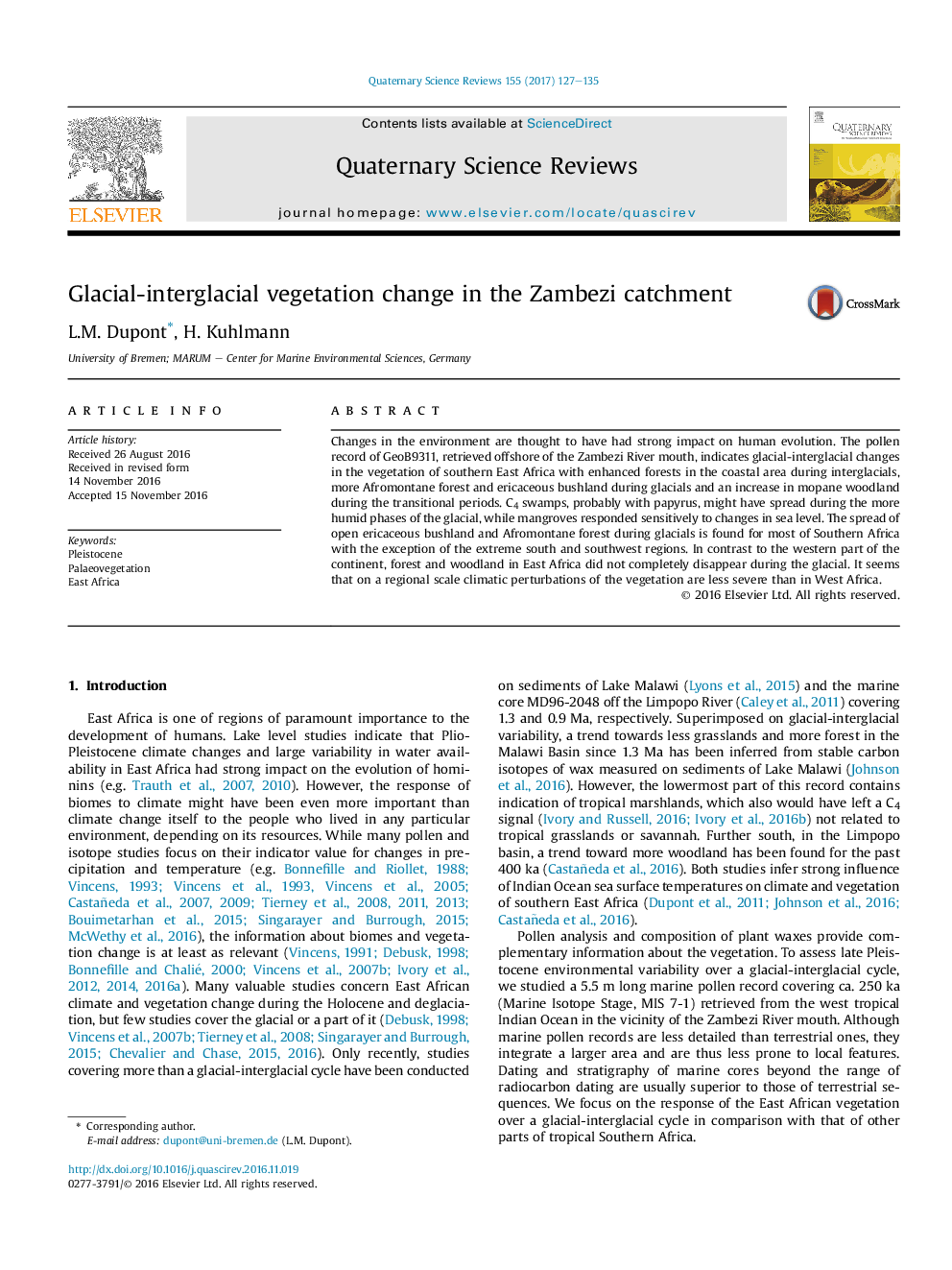| Article ID | Journal | Published Year | Pages | File Type |
|---|---|---|---|---|
| 5786844 | Quaternary Science Reviews | 2017 | 9 Pages |
Abstract
Changes in the environment are thought to have had strong impact on human evolution. The pollen record of GeoB9311, retrieved offshore of the Zambezi River mouth, indicates glacial-interglacial changes in the vegetation of southern East Africa with enhanced forests in the coastal area during interglacials, more Afromontane forest and ericaceous bushland during glacials and an increase in mopane woodland during the transitional periods. C4 swamps, probably with papyrus, might have spread during the more humid phases of the glacial, while mangroves responded sensitively to changes in sea level. The spread of open ericaceous bushland and Afromontane forest during glacials is found for most of Southern Africa with the exception of the extreme south and southwest regions. In contrast to the western part of the continent, forest and woodland in East Africa did not completely disappear during the glacial. It seems that on a regional scale climatic perturbations of the vegetation are less severe than in West Africa.
Related Topics
Physical Sciences and Engineering
Earth and Planetary Sciences
Geology
Authors
L.M. Dupont, H. Kuhlmann,
